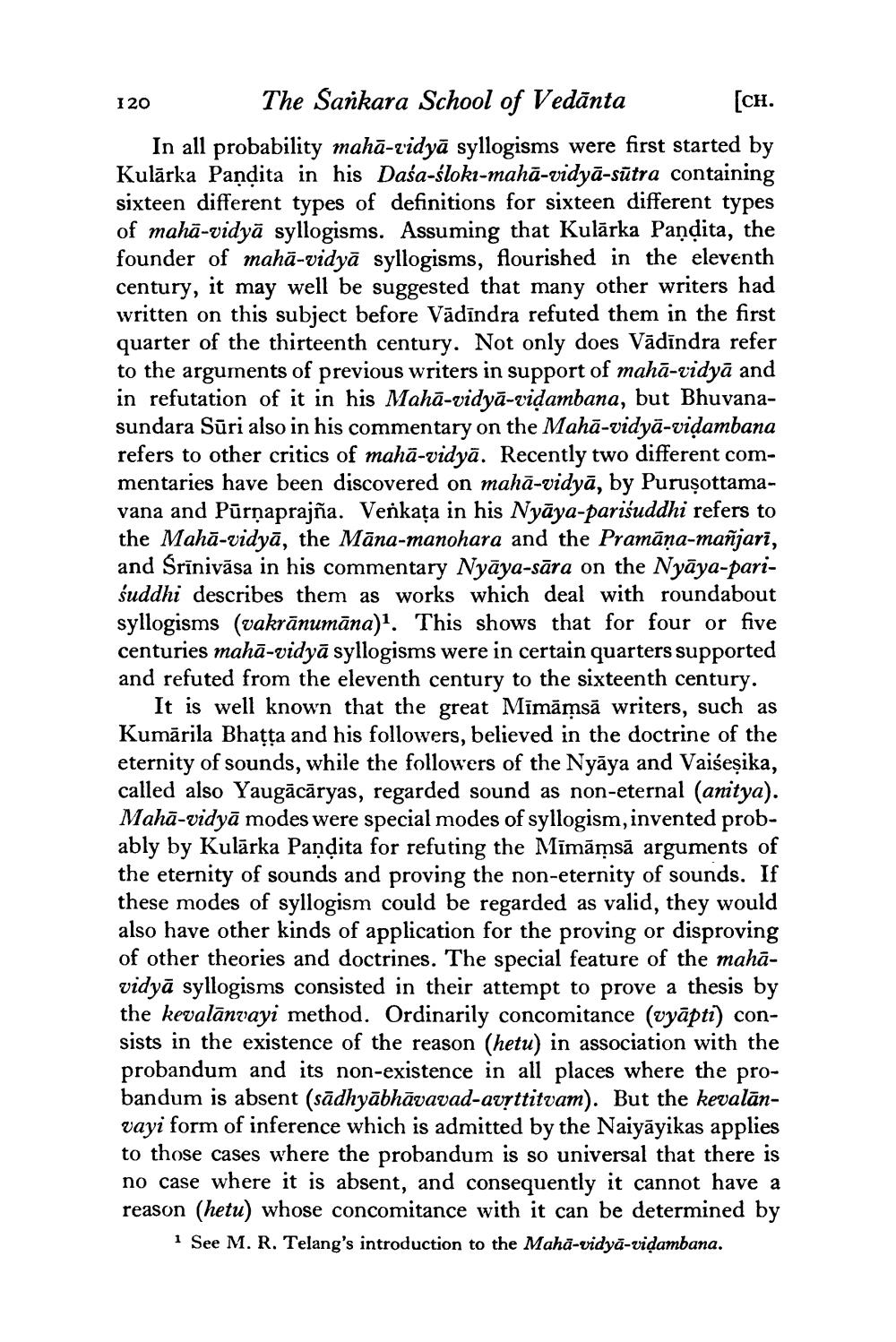________________
120
The Sankara School of Vedānta [CH. In all probability mahā-vidyā syllogisms were first started by Kulārka Pandita in his Daśa-śloka-mahā-vidyā-sūtra containing sixteen different types of definitions for sixteen different types of mahā-vidyā syllogisms. Assuming that Kulārka Pandita, the founder of mahā-vidyā syllogisms, flourished in the eleventh century, it may well be suggested that many other writers had written on this subject before Vādīndra refuted them in the first quarter of the thirteenth century. Not only does Vādīndra refer to the arguments of previous writers in support of mahā-vidyā and in refutation of it in his Mahā-vidyā-vidambana, but Bhuvanasundara Sūri also in his commentary on the Mahā-vidyā-vidambana refers to other critics of mahā-vidyā. Recently two different commentaries have been discovered on mahā-vidyā, by Purusottamavana and Pūrņaprajña. Venkata in his Nyāya-parisuddhi refers to the Mahā-vidyā, the Māna-manohara and the Pramāņa-mañjarī, and Śrīnivāsa in his commentary Nyāya-sāra on the Nyāya-pariśuddhi describes them as works which deal with roundabout syllogisms (vakrānumāna)l. This shows that for four or five centuries mahā-vidyā syllogisms were in certain quarters supported and refuted from the eleventh century to the sixteenth century.
It is well known that the great Mimāmsā writers, such as Kumārila Bhatta and his followers, believed in the doctrine of the eternity of sounds, while the followers of the Nyāya and Vaiseșika, called also Yaugācāryas, regarded sound as non-eternal (anitya). Mahā-vidyā modes were special modes of syllogism, invented probably by Kulārka Pandita for refuting the Mimāṁsā arguments of the eternity of sounds and proving the non-eternity of sounds. If these modes of syllogism could be regarded as valid, they would also have other kinds of application for the proving or disproving of other theories and doctrines. The special feature of the mahavidyā syllogisms consisted in their attempt to prove a thesis by the kevalānvayi method. Ordinarily concomitance (vyāpti) consists in the existence of the reason (hetu) in association with the probandum and its non-existence in all places where the probandum is absent (sādhyābhāvavad-avrttitvam). But the kevalānvayi form of inference which is admitted by the Naiyāyikas applies to those cases where the probandum is so universal that there is no case where it is absent, and consequently it cannot have a reason (hetu) whose concomitance with it can be determined by
1 See M. R. Telang's introduction to the Maha-vidyā-vidambana.




